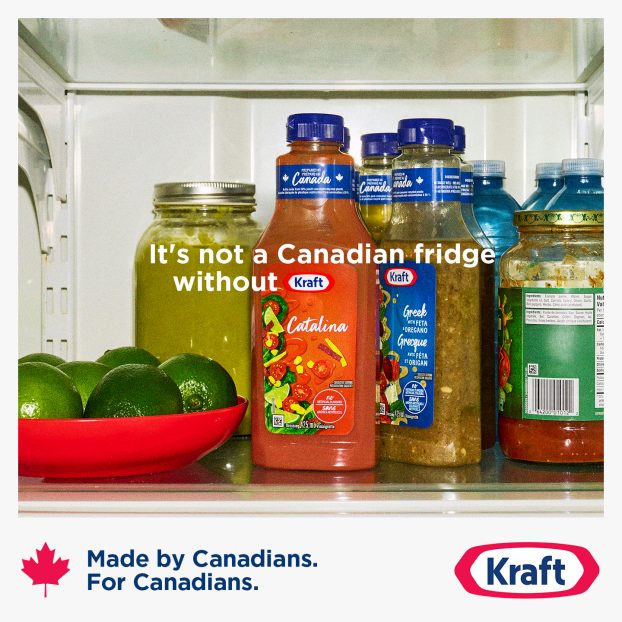While these vexing economic times have crippled many retailers, San Francisco-based Gap Inc.’s troubles seem to have started long before Sept. 11. In fact, for the first nine months of fiscal 2001, ended Nov. 3, net income at the company, which owns the Banana Republic, Gap and Old Navy brands, plunged 96%. Moreover, in December, its mammoth Gap chain was dealt its 19th consecutive month of declining same-store sales. Compare that to the untroubled 1990s: sales climbed from $1.93 billion in fiscal 1990 to $11.64 billion in fiscal 1999 – when the retailer pretty much owned the khaki wear category. Such success soon spawned a slew of imitators, like Levis’ Dockers brand, which forced the banner to expand outside of its expertise, culminating in the introduction of far-out fashion elements like oddly printed tees and god-awful-bright hues. This only baffled shoppers who could already get cheap-and-cheerful designer imitations from the likes of Le Chateau, and more recently, Gap’s own youthful sibling, Old Navy. So how can Gap, which has 4,100 stores worldwide and 224 in Canada, steer its ship toward a more profitable future? And how can other Canadian retailers take advantage of its current situation? Below, three experts share their thoughts.
Maureen Atkinson
Retail analyst
J.C. Williams Group, Toronto
Maureen Atkinson suggests a clearer distinction between Gap Inc.’s banners, particularly between Gap and Old Navy.
‘Essentially, they’ve over-expanded with a product that’s not well-differentiated. They have all these different units, [Gap, Old Navy and Banana Republic], which are very similar, except for their price structure. That has created a problem for them, in that they’re competing with themselves.
‘The question is, why would I buy a turtleneck at the Gap and pay $25 for it, when I could buy something that looks the same to the average consumer at Old Navy for $15? It’s no secret that Old Navy is owned by Gap, so it seems like the same product, and the company looks like they are trading their customers down.
‘Originally when they introduced Old Navy, they thought it would be for a young customer and that the mature customer would stick with Gap. But the two banners are essentially getting the same customers.
‘Obviously, it would be better if they distinguished themselves more clearly. I think they’ve picked the best looks of the season [for both chains], and that goes across different age groups. What they have to do is not just sort out the customer target, but also their merchandise, which has to be more distinctive.
‘In the past [when the Gap has slipped], they really changed their merchandise. President Millard S. Drexler stepped in, took a firm hand and things seemed to get better. But you can’t run a huge organization while depending on one person. You have to find a way of renewing, and [part of that is] finding the right executives to lead the company. [In mid-January, the company announced it was looking for a new president for its Gap brand.]
‘Way back in the past, the chain was actually a discount jeans store, and it was called Gap because it referred to the gap in price between name brands and its own. Drexler repositioned Gap, and it became colorful sweat suits, and then later he moved on to the basics. So the sweats evolved into T-shirts and cotton clothing.
‘The company was able to do that, but it was much smaller then. When you become larger, it’s hard to turn something around very quickly, and when you start stumbling it becomes difficult to experiment.
‘One season they went heavily into clubwear, a non-Gap look, and they got killed. They had no relevance in that category for the customer of that product. So they have to be careful [when they do reposition].
‘In terms of marketing, they obviously have become quite stale. One of the most innovative ads they did was the swing dance. That had people talking about the Gap. When you have problems, there’s a tendency to take fewer risks, and to go back to the things that were successful before. They go back to the same-old, but that doesn’t work.’
Andy Macaulay
Partner and planner
Zig, Toronto
Andy Macaulay proposes the Gap chain return to its ‘fashion basics with an edge’ image, which he believes should be supported at the store level with dynamic window displays. In advertising, he proposes the elimination of the fringe celebrities who have starred in Gap’s campaign for the last while.
‘It starts with the merchandise. They had a great fashion thing going on, and Drexler was given credit for keeping the Gap on trend. Then they went all weird, with strange colors and fashions.
‘Basics with a bit more fashionability is where they should be. Part of their magic, before they caught this cold, was that they provided basics with an edge. The product had enough fashionability just to be distinctive.
‘For instance, two Christmases ago they had a great, multi-colored scarf. It was nothing terribly outrageous but had enough fashionability that it appealed to a wide demographic. That’s part of the magic of Gap: they didn’t cater [to a specific demo]. Then they went to an extreme and did it a couple of seasons in a row, so that the, ‘I have to go to Gap this week to see what they have’ [behaviour] took a shot.
‘I don’t think their windows were up to snuff over the last year, either. Their displays didn’t have the same inspiration. The Gap has always been relatively simple and clean, but they were able to have dramatic windows. So the problem started with merchandise that wasn’t pulling people in, and then the windows that weren’t inspiring people.
‘On the other hand, the advertising is, if nothing else, distinctive, and that’s better than a lot of retailers. They’ve got a strong property and, of course, it needs to evolve with fashion changes, but I don’t think it’s fundamentally broken. My advice would be to continue to capitalize on its distinctiveness.
‘Executionally, when you use celebrities and have to name them, I question the value of using those celebrities. I’m not sure what celebs do for them. To me it’s difficult to avoid the appearance of attempted borrowed interest. You’re using them because you think their coolness will rub off on your brand. But if you have great product, you don’t have to borrow somebody else’s cool. I would find new ways to evolve the campaign, but I wouldn’t change it that fundamentally.’
Pascale LeBlanc
Partner
Big Orbit, Toronto
Pascale LeBlanc recommends changes in Gap’s marketing and merchandising strategy, but also advises Canadian retailers on how to take advantage of its condition, by zeroing in on the teen demographic, and creating an ultimate in-store experience.
‘Gap is no longer alone in this ferociously competitive industry but they still act like they are. The company started as a jeans-only store, drawing on a strong teenage customer base. Since 1969, the Gap has suffered from marketing too broadly. They seem to believe that they can be everything to all people. Most of their financial problems are self-inflicted mainly due to cannibalizing the Gap with Old Navy.
‘They have also made mistakes in what kind of clothes they’ve been trying to sell to youth. They should stick with selling basics like jeans and cool T-shirts instead of trying to offer everything for [every] demographic. Their [marketing] messages do not seem to reach out to the audience but always ask them to look inward at their definition of the Gap brand. In doing this, they may have lost their grip on their customers.
‘Over the past few years, competitors such as Abercrombie & Fitch, American Eagle Outfitters, and The Limited have bumped Gap from being number one on the teen’s top lists. So, how would Canadian retailers take advantage of Gap’s current situation? Well, Canadian retailers may find the Gap to be in turmoil, but since last November, another top teen retail company, American Eagle Outfitters, strongly entered the Canadian market. Those high-profile stores are established in prime Canadian mall locations. Look out!
‘[Nonetheless], Canadian retailers need to clearly communicate their brand image throughout their essential unique characteristics and speak directly to their target audience with a constant message. They are a step ahead of [their American competitors]. Why? They have the Canadian market and customer know-how. That means they should keep their eyes on their own businesses and customers if they don’t want to find themselves in the Gap position.
‘If you know what your brand stands for, respect your customers and understand their needs, you don’t necessarily have to change your strategy. Changing strategy without a strong reason only shows weakness.
‘[However], we believe that Canadian retailers targeting 11- to 22-year-olds should adopt a ‘youth boutique, in-store’ approach. Today’s kids like to shop in a ‘youth-approved’ environment. Marketing strategies need to consider creating an exciting, modern, urban, customer-friendly environment staffed with people who strongly relate to the target audience. Position the design and implementation of a retail mix to create a positive image of your retail store in the customer’s mind. For example, the store design, layout of merchandising, display and visuals must be consistent because they are all a part of communicating the brand image.
‘The in-store ambiance must evolve and react quickly to the changing needs of the target audience. Include a mix of elements, such as visuals that depict young people enjoying an active lifestyle with friends, event/concert billboards, high-tech sound systems, video screens showing the ‘live your life’ attitude, lounge areas where kids can relax and interact.
‘Trends had an average lifespan of five months, but now the lifespan of a trend is a close eight- to 12-week window of opportunity. This can make it really difficult for retailers to keep up with the right retail mix. However, if Canadian retailers keep their marketing research and communications focused on the needs and values of the youth market, they can prosper when facing foreign competition.’























